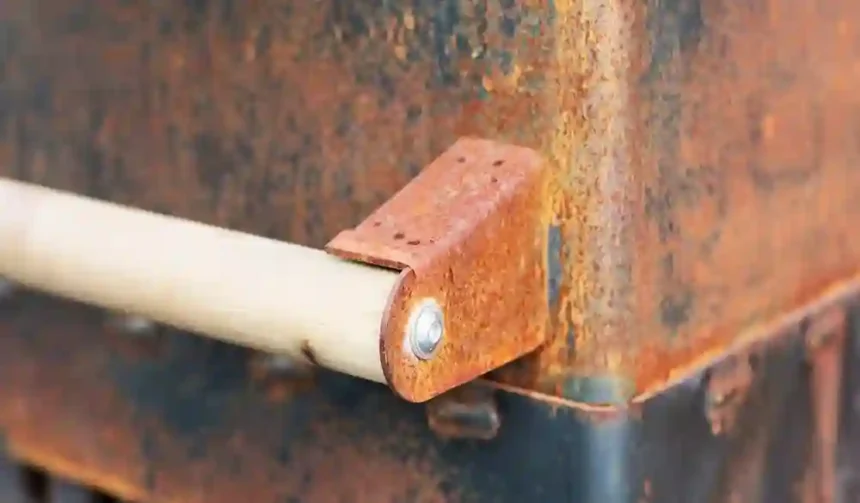Australia’s harsh climate—ranging from the salty breezes of coastal regions to the extreme heat of the inland and the damp conditions of the tropics—poses a significant challenge for steel structures. As a building professional, you’re well aware that protecting steel from corrosion isn’t just about aesthetics; it’s about ensuring structural integrity, longevity, and safety. This guide will walk you through the process of applying corrosion protection coating to steel, covering everything from understanding the underlying issues to the nitty-gritty of surface preparation, application techniques, and maintenance.
Understanding Corrosion and Its Impact
Corrosion is a natural process where steel deteriorates due to chemical reactions with its environment, typically involving oxygen and moisture. In Australia, where the weather can swing from humid coastal conditions to dry, abrasive dust, steel is under constant attack. Without proper protection, corrosion can lead to:
- Structural Weakness: Corrosion eats away at steel’s integrity, compromising the strength of beams, columns, and other critical elements.
- Increased Maintenance Costs: Once corrosion sets in, repairs and replacements become necessary, inflating the overall project budget.
- Safety Hazards: Deteriorating steel can lead to catastrophic failures, putting lives and investments at risk.
By applying a corrosion protection coating, you create a barrier between the steel and its corrosive environment. This proactive measure not only extends the lifespan of your steel structures but also ensures compliance with building codes and standards specific to Australia.
Why Corrosion Protection is Essential in Australia
Australian building standards are rigorous, particularly when it comes to corrosion protection. The AS/NZS 2312 series, for example, provides guidelines on protective coatings for metal structures. Given the diverse climatic zones across the country, it’s essential to choose a coating system that caters to local environmental conditions. Consider these factors:
- Coastal Exposure: Structures near the ocean are exposed to salt-laden winds, making them particularly vulnerable.
- Industrial Areas: Proximity to industrial zones can mean exposure to chemicals and pollutants that accelerate corrosion.
- Rural and Inland Regions: Even in less humid areas, temperature fluctuations and UV exposure can degrade coatings over time.
Understanding these factors will help you select the right coating system and tailor your application process to the demands of your project location.
Selecting the Right Corrosion Protection Coating
There are several types of coatings available, each with its own benefits and ideal use cases. Here are some of the most common options used by building professionals in Australia:
1. Zinc-Rich Primers
These primers contain a high percentage of zinc dust that offers excellent galvanic protection. They’re particularly effective in marine and industrial environments. The zinc acts as a sacrificial layer, corroding in place of the steel.
2. Epoxy Coatings
Epoxy coatings are favoured for their durability and excellent adhesion. They provide a robust barrier against moisture and chemicals, making them ideal for areas with heavy industrial exposure or where chemical spills might occur.
3. Polyurethane Coatings
For areas that demand a tough, weather-resistant finish with UV stability, polyurethane coatings are a good choice. They not only protect against corrosion but also help maintain the aesthetic appeal of the structure.
4. Acrylic Coatings
Lightweight and fast-drying, acrylic coatings are best used for structures that require regular maintenance or where quick turnaround times are essential. They’re often used as a topcoat over other systems.
Each coating type has its own application techniques and drying times. When selecting a product, consider factors like the local climate, the expected life of the structure, and any specific environmental challenges. It’s always advisable to consult with the product manufacturer’s technical data sheets to ensure you’re applying the coating correctly.
Surface Preparation: The Foundation of a Great Job
Before any coating can be applied, proper surface preparation is essential. Think of it as laying the foundation for a quality finish—the better the preparation, the longer your coating will last. Here’s what you need to do:
1. Cleaning
Remove all dirt, grease, and contaminants from the steel surface. This often involves using degreasers or alkaline cleaning solutions. A clean surface ensures the coating adheres properly.
2. Removal of Existing Corrosion
Any rust or previous coatings must be removed. Mechanical methods like abrasive blasting or hand-scraping are common. Abrasive blasting, in particular, is effective in creating a profile that enhances the mechanical adhesion of the coating.
3. Surface Profiling
The blasted surface should have a profile that the coating can grip onto. This is typically measured in microns, and standards such as those in the SSPC-SP series or ISO 8501 can provide guidance on achieving the right profile.
4. Moisture Control
Ensure that the steel is dry before application. Even a slight amount of moisture can lead to coating failure. In Australia’s variable climate, extra care should be taken during periods of high humidity or after rain.
Remember, cutting corners on surface preparation can lead to premature coating failure. The effort you put in at this stage will save time and money in the long run.
Application Techniques: From Primer to Topcoat
Once your steel is prepped, the application process can begin. This process generally involves multiple layers, each serving a specific purpose:
1. Application of Primer
The primer is the first layer that directly adheres to the steel. Zinc-rich primers or epoxy primers are commonly used in Australia. This layer is critical because it provides the first line of defence against corrosion.
Tips:
- Apply the primer in a clean, dust-free environment.
- Follow the manufacturer’s instructions regarding temperature and humidity for optimal drying.
- Use appropriate personal protective equipment (PPE) during application.
2. Intermediate Layers
Depending on the coating system, one or more intermediate layers may be applied. These layers build up the thickness of the coating system and add additional protection. They can be epoxy or polyamide-modified epoxy systems that offer improved impact resistance.
Application Note:
- Allow each layer to cure fully before applying the next.
- Maintain consistent thickness to avoid weak spots in the protective barrier.
3. Topcoat Application
The topcoat is not only the final protective barrier but also determines the aesthetic finish of your steel. Polyurethane or acrylic topcoats are common choices due to their excellent resistance to UV light and weathering. In some cases, a topcoat might also be designed to be self-cleaning, reducing maintenance requirements.
Practical Considerations:
- Ensure proper mixing of the coating materials to avoid inconsistencies.
- Use high-quality brushes or spray equipment to apply a smooth, even finish.
- Monitor environmental conditions closely, as wind and temperature can affect the drying process.
4. Curing Process
The curing process is as important as the application. It’s during this time that the coating develops its full strength. In Australia, where daytime temperatures can be high, the curing process might occur faster than expected. However, ensure that the coated steel isn’t disturbed until fully cured.
Maintenance of Curing Conditions:
- If possible, shield the coated area from direct sunlight and wind during the initial curing period.
- Avoid touching or applying pressure to the surface to prevent defects.
Safety Considerations on Site
Working with coatings and solvents requires a rigorous approach to safety. As a building pro, ensuring your team’s safety is paramount. Here are some key points:
1. Personal Protective Equipment (PPE)
Wear the right PPE at all times. This might include:
- Coveralls or protective suits
- Gloves and safety boots
- Respirators or masks, particularly when dealing with solvent-based products
- Eye protection to guard against splashes
2. Ventilation
Ensure that the workspace is well ventilated, especially when applying coatings indoors or in confined spaces. Good ventilation not only protects the applicators but also helps the coatings cure evenly.
3. Handling and Storage
Coatings and solvents should be stored according to the manufacturer’s guidelines. Keep them in a cool, dry place away from direct sunlight and sources of ignition.
4. Environmental Concerns
Dispose of any waste materials, including cleaning solvents and rags, in accordance with local environmental regulations. Australia has strict guidelines about hazardous waste, and proper disposal is not only a legal requirement but also an ethical one.
Common Pitfalls and Pro Tips
Even seasoned professionals can run into issues when applying corrosion protection coatings. Here are some common pitfalls and pro tips to help you avoid them:
1. Inadequate Surface Preparation
Skipping steps in surface preparation is one of the most frequent causes of coating failure. Always take the time to thoroughly clean, de-rust, and profile the surface.
2. Environmental Factors
Applying coatings during unsuitable weather conditions—such as high humidity, extreme temperatures, or strong winds—can compromise the finish. Always check the weather forecast and plan your work accordingly.
3. Incorrect Mixing
Many coatings require precise mixing ratios. A small error can lead to improper curing and reduced protective properties. Use calibrated measuring equipment and adhere strictly to the manufacturer’s instructions.
4. Over-application or Under-application
Both over-thick and under-thick layers can lead to problems. Over-application may result in sagging or extended drying times, while under-application leaves the steel vulnerable. Practice on a test panel if you’re using a new product or technique.
5. Regular Inspections and Maintenance
Even the best coatings require periodic inspections. Set up a maintenance schedule to check for signs of wear or damage, and address any issues promptly to prevent further deterioration.
Curing and Long-Term Maintenance
Once your coating has been applied and cured, your work isn’t quite done. Long-term maintenance is essential to ensure that the protective barrier continues to perform over the life of the structure.
1. Regular Inspections
Plan for routine inspections, particularly in areas prone to heavy wear or extreme environmental conditions. Early detection of issues like blistering, peeling, or chalking can allow for timely touch-ups or re-coating.
2. Cleaning Regimen
Keep the steel surfaces clean to remove any accumulated dirt, salt, or industrial fallout that could accelerate corrosion. A gentle wash with water and a mild detergent is often sufficient, but avoid harsh chemicals that might degrade the coating.
3. Touch-Ups and Repairs
Have a plan in place for addressing minor damages. For small chips or scratches, a quick touch-up might be all that’s needed. For larger areas, a complete re-coating may be required. Always refer back to the original manufacturer’s guidelines when making repairs.
4. Record Keeping
Maintain detailed records of when coatings were applied, the products used, and any subsequent maintenance work. This documentation is invaluable for warranty claims and future maintenance planning.
The Australian Advantage: Tailoring Your Approach
Australian conditions demand a specialised approach to corrosion protection. As a building pro, understanding local challenges can help you tailor your strategies:
- Local Regulations and Standards: Familiarise yourself with Australian standards, such as AS/NZS 2312. This ensures that your work complies with local regulations and industry best practices.
- Regional Climatic Data: Utilise local weather data to plan application schedules. For instance, coastal regions may benefit from coatings with higher zinc content, while inland projects might lean towards UV-resistant topcoats.
- Supplier Partnerships: Build relationships with local suppliers who understand the nuances of the Australian market. They can offer invaluable advice on product selection and application techniques that have been proven on similar projects.
Final Thoughts
Applying a corrosion protection coating to steel is an essential process for any building professional operating in Australia. With the country’s diverse and often challenging climate, the right coating system, combined with proper surface preparation and meticulous application, can significantly extend the life of steel structures while safeguarding your investment.
By following the detailed steps outlined in this guide—from choosing the appropriate coating and prepping the surface to applying the layers correctly and ensuring proper curing—you set yourself up for success. Regular maintenance and inspections, paired with adherence to safety protocols, will further enhance the durability of your work.
Investing in quality corrosion protection is not just about meeting building codes; it’s about building a legacy of excellence and reliability. Whether you’re working on a large-scale commercial project or a smaller residential build, taking the time to apply the correct protective measures is a hallmark of professional craftsmanship.
Remember, every project is unique. Local environmental conditions, project size, and specific client requirements may necessitate adjustments to the standard procedures. Stay informed about the latest developments in coating technologies and industry best practices. Continuous learning and adaptation are what keep a building pro at the top of their game.
In conclusion, the journey to a durable, corrosion-resistant steel structure is paved with careful planning, precision, and ongoing care. Embrace the process, invest in the best materials, and don’t hesitate to seek expert advice when needed. With a thorough understanding of the challenges and solutions presented in this guide, you’re well-equipped to ensure that your steel stands the test of time in the unique Australian environment.
So, next time you’re on site and faced with the task of protecting steel from the relentless forces of corrosion, remember: a little extra time and attention at the start can save you heaps in future repairs, while also contributing to safer, more resilient structures. Happy coating, and here’s to many years of corrosion-free performance!











